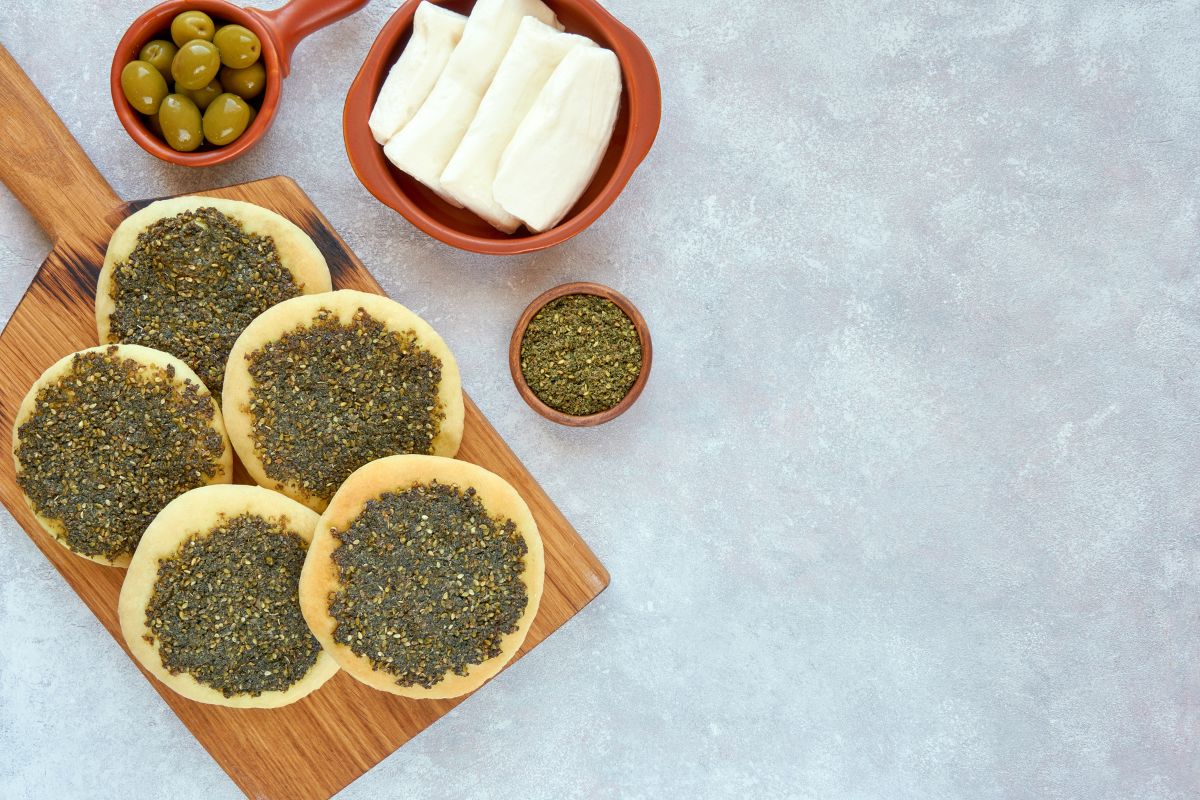Zaatar (or za’atar) is a Middle Eastern spice blend that includes dried thyme, oregano, and sumac, with toasted sesame seeds and salt added to taste. If you don’t have zaatar, you can make the blend yourself by mixing all the spices: dried thyme, oregano, sumac, toasted sesame seeds, cumin, and paprika, or use thyme or Italian seasoning as substitutes.
Table of Contents
What does Zaatar taste like?
Zaatar is a Middle East seasoning blend that typically contains a mixture of dried thyme, sesame seeds, sumac, and salt. The exact composition of zaatar can vary depending on the region and personal preferences, but thyme is usually the dominant flavor.
The taste of zaatar is a combination of earthy, savory, and slightly tangy notes. The thyme is herbaceous and somewhat minty, while the sumac adds a subtle sourness similar to lemon or vinegar. The sesame seeds give the zaatar blend a nutty and slightly crunchy texture, and the salt provides a salty note that enhances the overall flavor profile.
If you’re familiar with other Mediterranean herbs and spices, you can think of zaatar as a cross between oregano and cumin, with a lemony tartness.
What is Zaatar seasoning made of?
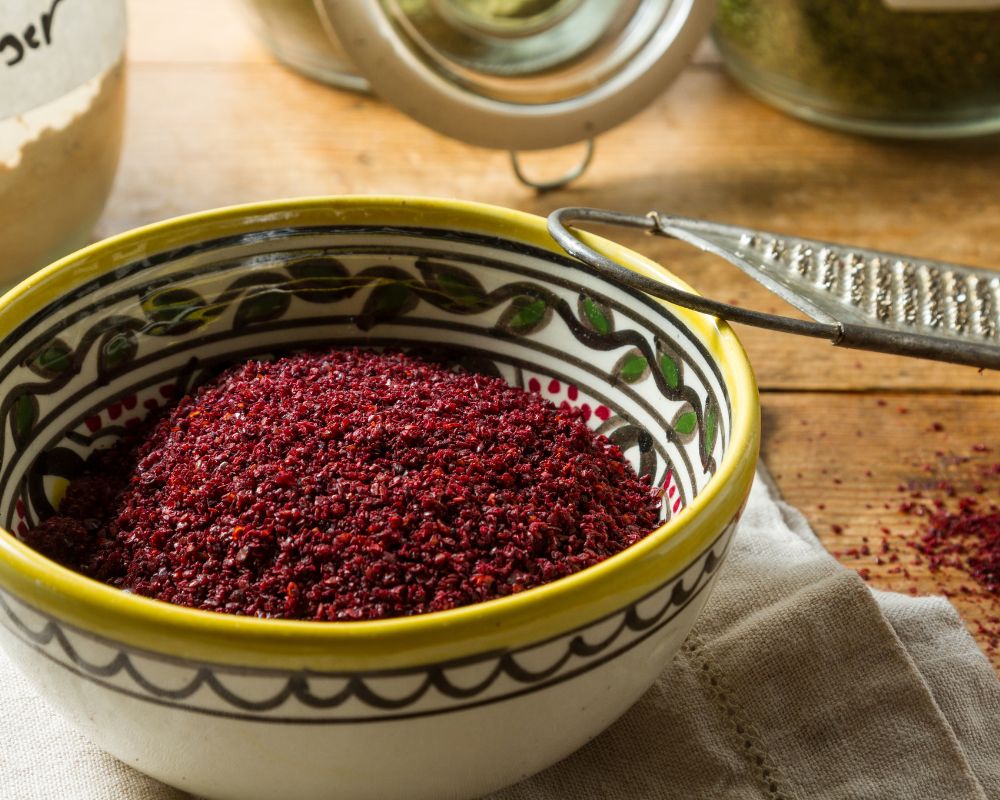



Zaatar seasoning is a Middle Eastern spice mixture that typically includes a combination of the following ingredients:
| Dried thyme | A fragrant herb that gives zaatar its signature earthy, slightly floral flavor |
| Sumac | A tart, lemony spice that adds brightness and acidity to the mix |
| Sesame seeds | Nutty and slightly sweet, sesame seeds give zaatar a pleasant crunch and depth of flavor |
| Salt | Adds a savory note and helps balance out the other spices |
Other possible ingredients can include marjoram, oregano, or cumin.
Top 7 Zaatar substitutes
If you’re out of zaatar or want to try something new, there are plenty of other ways to get your fix. Here are some substitutes for zaatar that will make your taste buds happy:
- Italian seasoning
- Harissa spice blend
- Ground coriander
- Shichimi togarashi
- Thyme
- Mixed herbs
- Dukkah
| Italian seasoning | Herbaceous, with notes of pine and citrus, works as a substitute in roasted vegetables, soups, stews |
| Harissa spice blend | Has a spicy, smoky, and slightly sweet flavor profile, good substitute in dishes like grilled meats, roasted vegetables, roasted chicken, and even on top of hummus |
| Ground coriander | Has a slightly sweet, citrusy, and earthy warm flavor profile, works with grilled vegetables, meats, and even soups or stews |
| Schimi togarashi | Has a spicy, citrusy, nutty, and slightly sweet flavor, ideal for dishes like grilled meats, and roasted vegetables |
| Thyme | Has a strong, herbaceous, and slightly minty flavor profile, can be a zaatar alternative in roasted vegetables, grilled meats, on certain dips, and even on top of bread |
| Mixed herbs | Have a savory, slightly sweet, and somewhat spicy flavor, works for almost any dish |
| Dukkah | Has a nutty, herbaceous, and slightly spicy flavor profile, used as a replacement for vegetables, grilled meats, and several dips |
1. Italian Seasoning
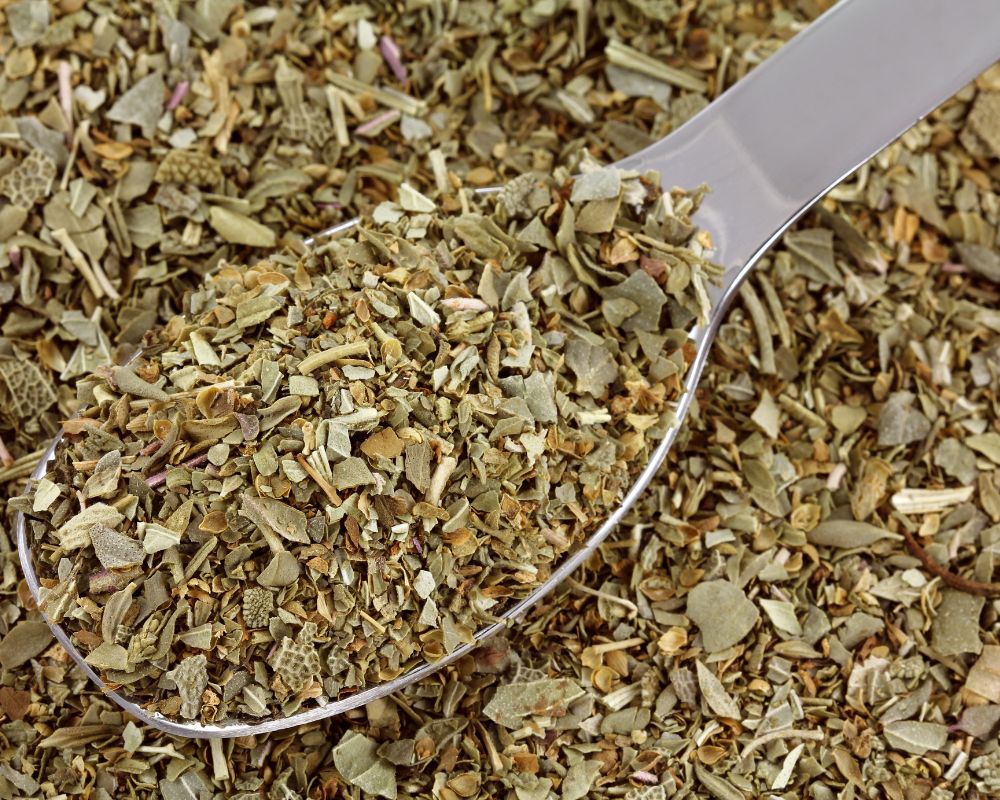
Italian seasoning is a blend of herbs commonly used in Italian cuisine – typically basil, oregano, rosemary, and thyme. The flavor profile is herbaceous, with notes of pine and citrus.
It can be used as a zaatar substitute in roasted vegetables, soups, stews, and even on top of bread or pizza. It will add a slightly different flavor profile but still provide a delicious herbaceousness. The substitute ratio is 1:1.
2. Harissa Spice Blend
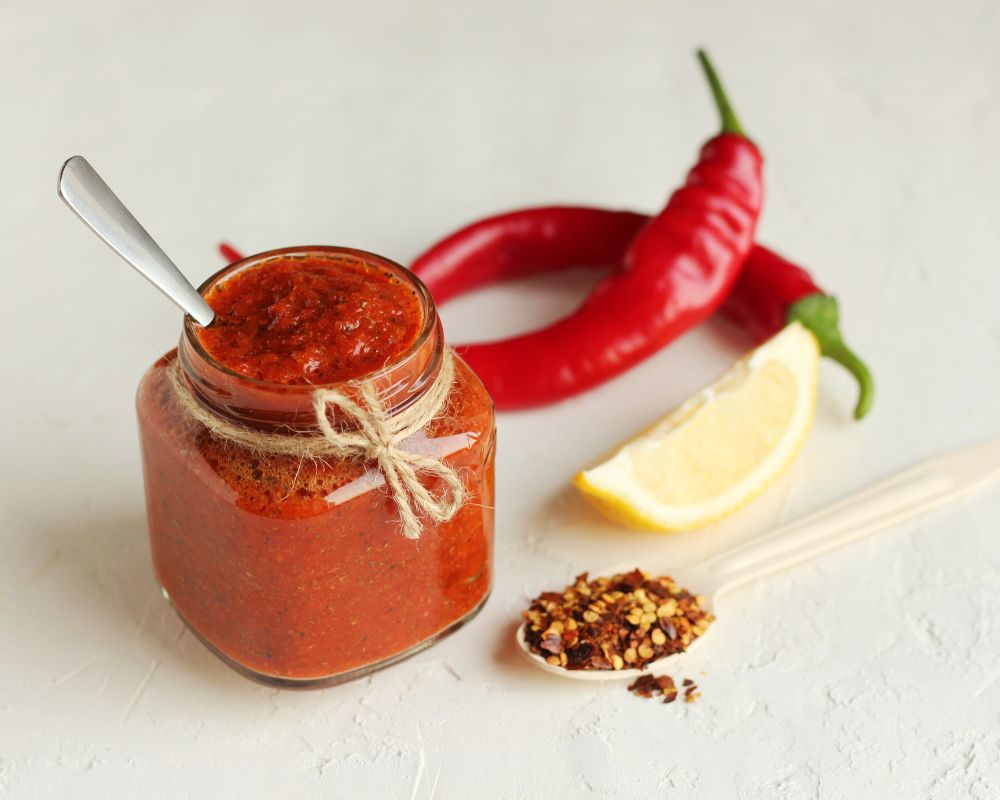
Harissa spice blend is a North African blend that includes chili peppers, cumin, coriander, garlic, and caraway seeds. It has a spicy, smoky, and slightly sweet flavor profile.
You can use it as a zaatar substitute in dishes like grilled meats, roasted vegetables, roasted chicken, and even on top of hummus. It will provide a different flavor profile with more heat and smokiness. The substitution ratio is 1:1.
3. Ground Coriander
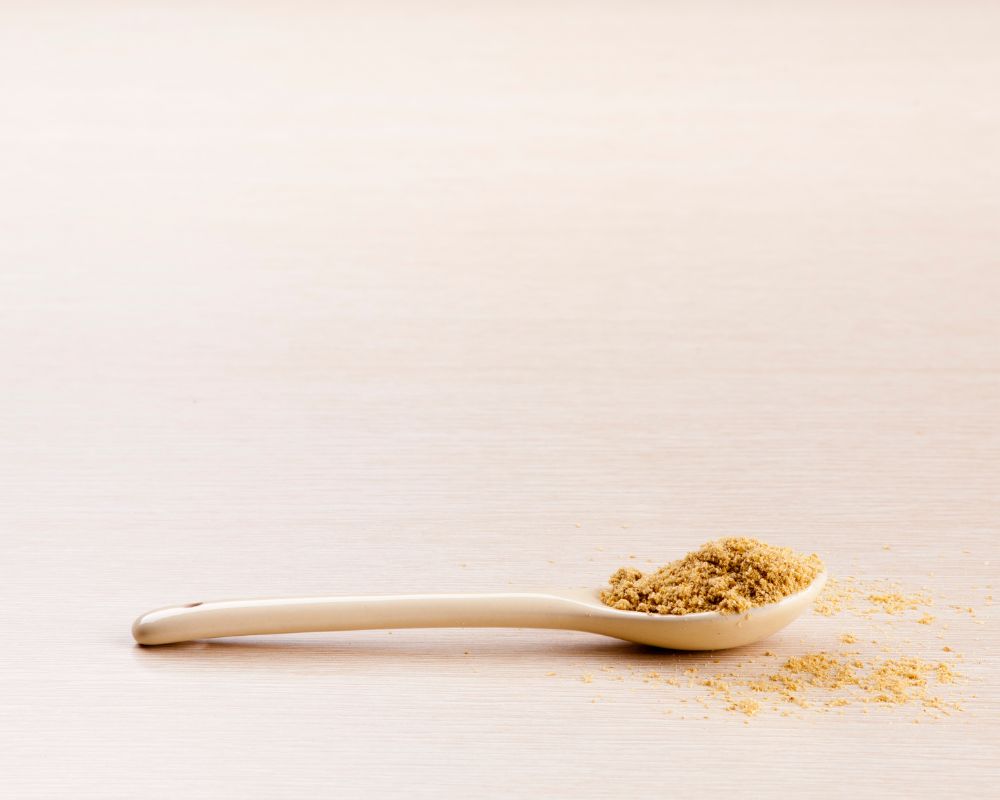
Ground coriander is a spice made from the dried seeds of the coriander plant. It has a slightly sweet, citrusy, and earthy warm flavor profile.
It can be used as a zaatar substitute in roasted and grilled vegetables, meats, and even soups or stews. It will provide a different flavor profile, with less herbaceousness and more earthiness. Follow a 1:1 ratio to substitute.
4. Shichimi Togarashi
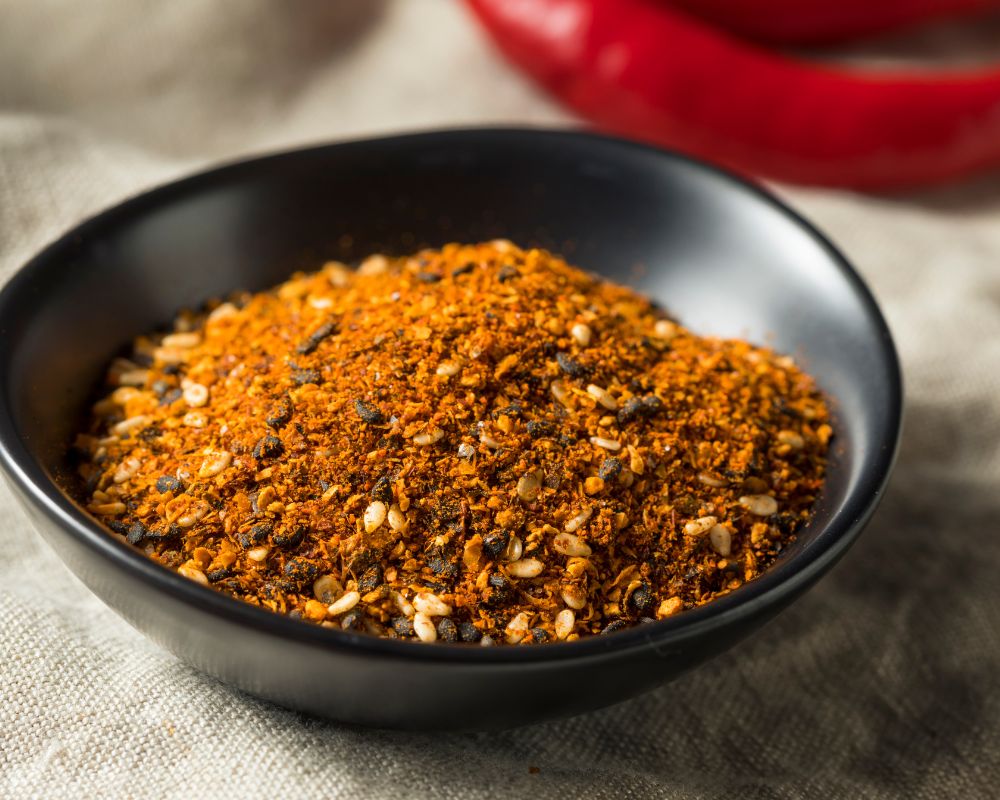
Schimi togarashi is a Japanese spice blend with chili peppers, Szechuan peppercorns, and spices like orange peel and sesame seeds. It has a spicy, citrusy, nutty, and slightly sweet flavor.
It can be used as a zaatar substitute in dishes like grilled meats, roasted vegetables, and even on top of rice. It will add more heat and nuttiness than zaatar. The substitute ratio is 1:1.
5.Thyme
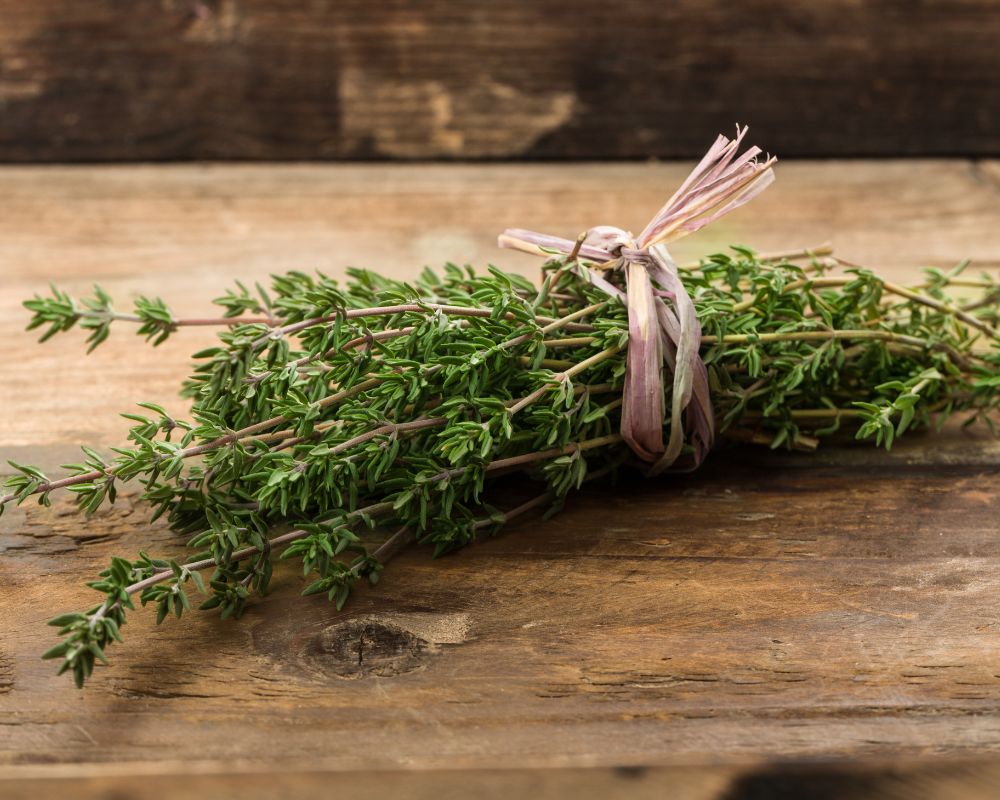
Thyme has a strong, herbaceous, and slightly minty flavor profile. It can be a zaatar alternative in roasted vegetables, grilled meats, on certain dips, and even on top of bread.
It contains a more robust herbaceous flavor and is less lemony. The ratio to follow is 1:1.
6. Mixed Herbs

Mixed herbs typically contain a blend of herbs such as thyme, rosemary, oregano, and basil. This spice has a savory, slightly sweet, and somewhat spicy flavor.
It will substitute zaatar in roasted vegetables, grilled meats, and pasta dishes, but it works for almost any other dish you can think of. Use it in the same ratio as zaatar in recipes.
7. Dukkah
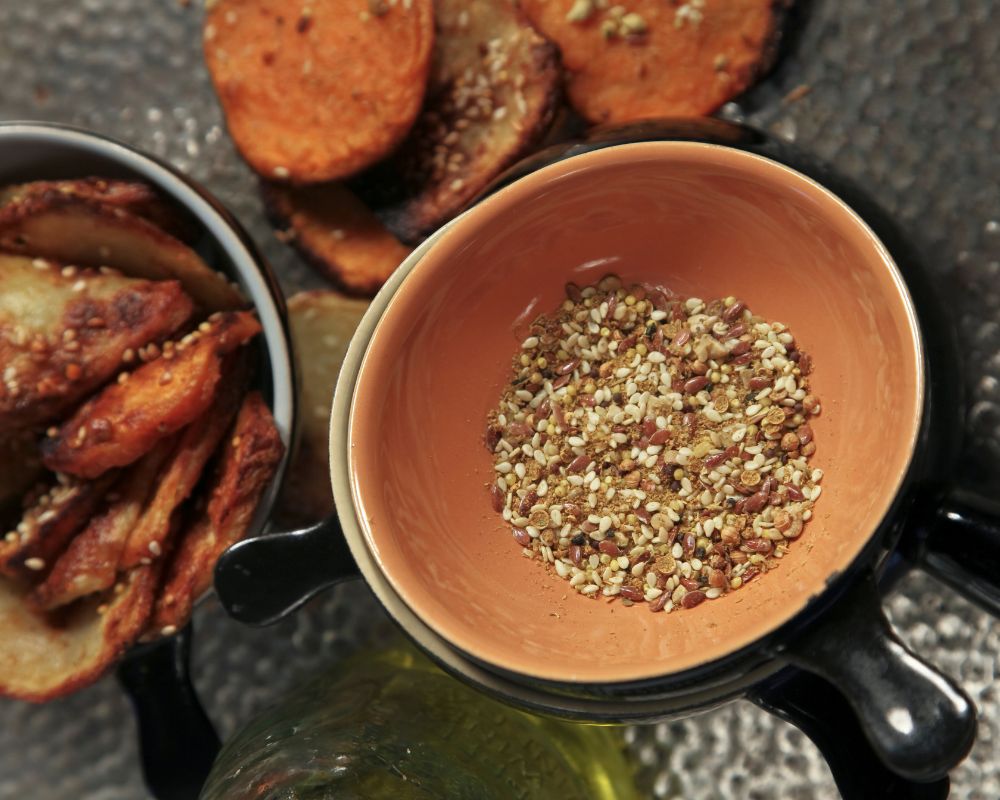
Dukkah is an Egyptian spice blend that includes nuts, such as almonds or hazelnuts, sesame seeds, coriander, cumin, and salt. It has a nutty, herbaceous, and slightly spicy flavor profile.
You can frequently see it used as a replacement for vegetables, grilled meats, and several dips. It will provide a different flavor profile with more nuttiness. The substitute ratio is 1:1.
Where can I find Zaatar?
Depending on where you live, you can find zaatar at your local grocery store or specialty food store.
If you’re having trouble finding zaatar locally, try looking online. Many online retailers specialize in Middle Eastern spices and ingredients, and you may be able to find zaatar on websites like Amazon, iHerb, or other specialty food stores.
If you still have trouble finding zaatar, consider making your own blend at home. There are many recipes available online that can guide you in making your own zaatar spice mix.
How to make Zaatar at home?
We’ve all been there: you’re reaching for zaatar, but there’s no jar to be found. Luckily, with this simple recipe, you can make your own zaatar recipe at home in no time — and save some cash while at it.
Ingredients:
- 1/4 cup dried thyme
- 1/4 cup dried oregano
- 2 tablespoons ground sumac
- 2 tablespoons sesame seeds
- 1 teaspoon salt
Instructions:
- Preheat your oven to 350°F (175°C).
- Spread the sesame seeds on a baking sheet and toast them in the oven for 5-7 minutes or until lightly golden. Keep an eye on them to make sure they don’t burn.
- Combine the toasted sesame seeds with the dried thyme, oregano, sumac, and salt in a mixing bowl.
- Mix well until everything is evenly combined.
- Enjoy your zaatar in or on dips like hummus or baba ghanoush and next to flatbread, pita bread, or crackers – with a drizzle of olive oil on top.
If you don’t have all the ingredients, pick some dried thyme, sesame seeds, and lemon zest (to replace the lemony sumac) from your pantry to complete the blend.
How to store homemade Zaatar?
Once the zaatar is completely dry, transfer it to an airtight container like a glass jar with air-tight lid. Store the zaatar in a cool, dry place away from direct sunlight: a pantry or a cupboard is a good option.
Homemade zaatar will generally last for a few months when stored properly. However, it’s best to use it within a few weeks for the best flavor and depth.
Before using zaatar, check for any signs of spoilage, such as a musty smell or mold growth.

